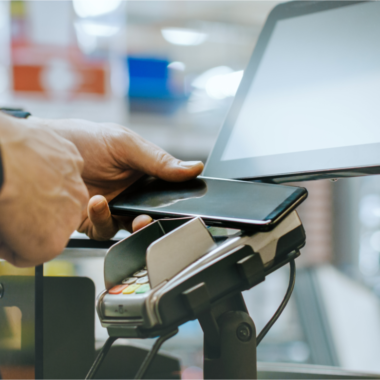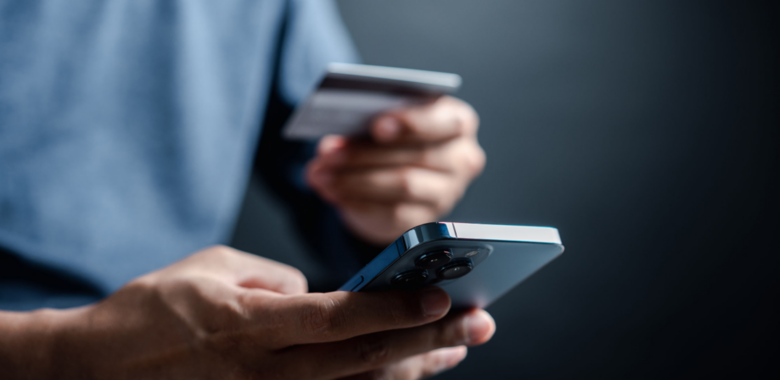You may have noticed “card only” signs appearing at the checkout counters of your local supermarket, encouraging shoppers to pay using their cards as a health and safety precaution. This became more common during the coronavirus pandemic as retail businesses refused to accept cash in case notes and coins carried the virus. As a result, UK’s largest ATM network operator – Link, reported that cash usage in Britain halved within a matter of days. Furthermore, on March 23, shops and banks agreed to raise the limit for contactless payments, previously £30, to £45, starting from April 1 and other countries, like France, did the same.
The growth in smartphone use and online banking has been a key driver in society’s shift away from using cash. A cashless society brings advantages for consumers and businesses alike, but in our current environment, using contactless technology can also positively affect users’ physical wellbeing.
However, concerns have been raised that many vulnerable people will be unable to pay for the basics they need if they cannot use cash. Rural communities without access to reliable internet or fast mobile data, the unbanked, the elderly and people with a history of debt problems could risk being excluded if we move too quickly towards becoming cash-free.
As many retailers were forced to close their brick and mortar stores and have encouraged people to continue shopping with them online, those without a bank account or people who are not able to use technology were likely to be excluded.
The real crux of the cashless society debate is about the fundamental importance of fairness and inclusivity. Digital technology could help us with our efforts to drive digital inclusion quicker, so that everyone has access to the digital economy. Let’s look into how technology – including contactless payments, digital payments and biometrics – helps make access to financial services easier, faster and more secure for everyone.
Contactless payments
1.5 billion contactless payment cards were delivered in 2019, and this number is expected to nearly double by 2023 to 2.7 billion, thanks to the technology taking off in markets such as the U.S., Brazil and South Asia. This also means that the growing adoption will allow people who haven’t been able to get access to the technology to date, to take advantage of the value and convenience of contactless.
The technology also opens the door to new opportunities and innovations based on wearable devices, meaning that we’re now able to swipe and pay for goods and services by just using our smart watches, rings and wristbands. This is particularly useful in times when we need to be mindful of the services around us and be careful what we touch.
Digital payments
According to the Financial Conduct Authority there are 1.3m people in the UK without a bank account, meaning that they are unable to participate in the formal financial system. While cash is currently the only option for the unbanked to pay for goods, it can also be a barrier for them to engage in financial services.
Today, two thirds of the global unbanked population own a mobile phone, meaning that they can easily connect to a financial institution or make payments digitally as they have access to mobile banking. They don’t need to go to a bank branch, instead they can get a direct deposit of their income using their mobile device.
Card payments are becoming ever more accessible as the world’s biggest card issuers offer pre-paid debit cards which don’t require a bank account or credit check to obtain. Furthermore, the so-called disruptor or digital-only banks like Revolut, Nubank or Monzo, also offer access to bank accounts without the need to have a prior account with a local bank. Once you’ve signed up for these you can get a physical card, as well as virtual payment cards that can be immediately used for online purchases and contactless payments on your phone.
Biometrics
Many people are already benefiting from the convenience of fingerprint biometrics on smartphones to access applications and authenticate a transaction without having to remember a PIN code.
Biometric cards, using fingerprint authentication, present the next step in the evolution of card payments as they offer an easier and more secure way to make transactions. These cards can help provide a reliable alternative to cash for the most vulnerable in society.
With the biometric card, you don’t need to enter a PIN code on the Point-of-Sale (POS) Terminal to perform a transaction. You simply place your finger on your own card’s fingerprint sensor for authentication. This provides a massive opportunity for those with literacy or numeracy problems as these cards don’t require a PIN to authorise a transaction. Since your fingerprint cannot be easily replicated, this means that the card can be used for transactions of any amount.
With technology continuing its swift transformation of the financial industry, it’s only a matter of time until the vast majority of the world’s population is included. Our current climate is a driver for financial and government institutions to rethink how they could use technology to democratise access to financial services and allow everyone to enjoy the safety and convenience of contactless and digital payments.



